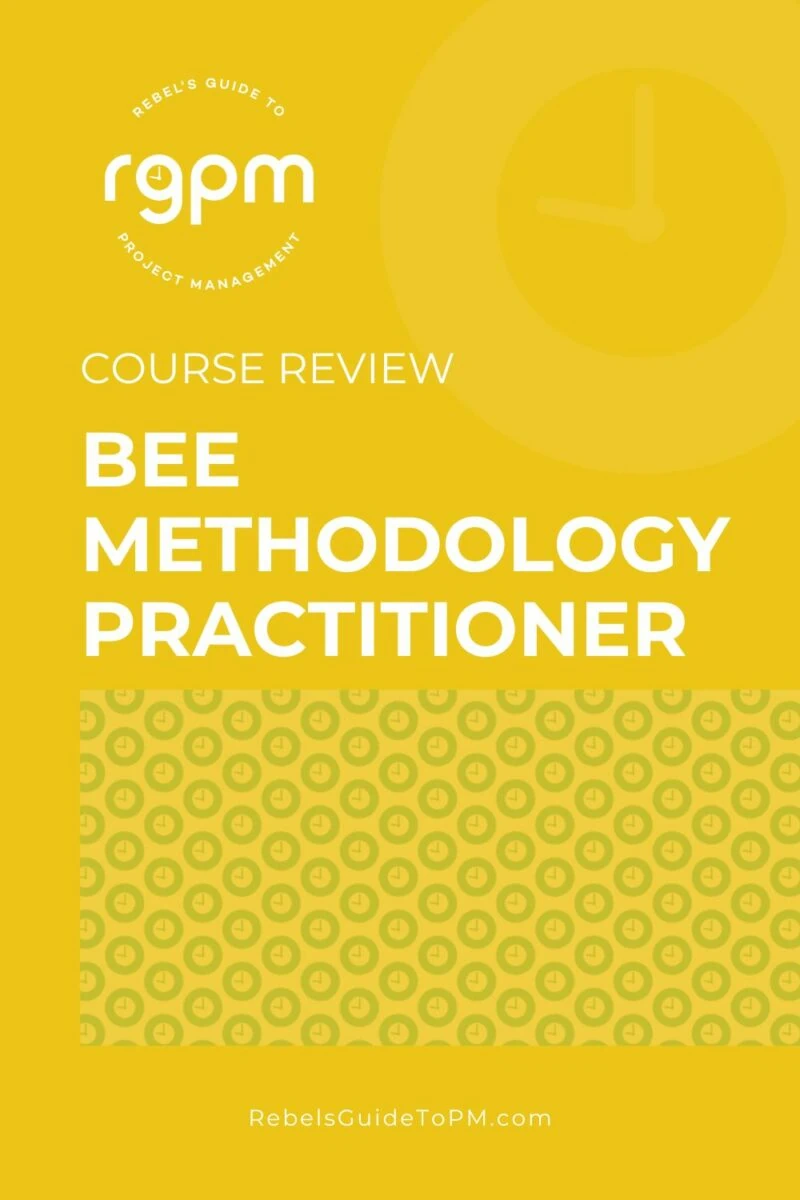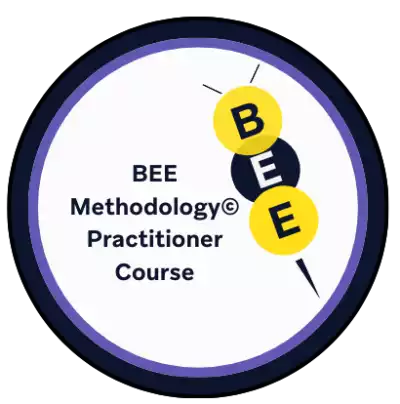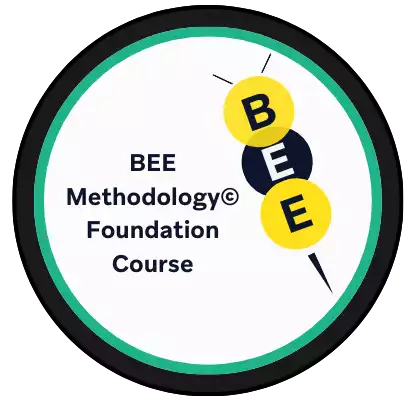BEE Methodology Practitioner Course Review
This blog is reader-supported. When you purchase something through an affiliate link on this site, I may earn some coffee money. Thanks! Learn more.
Change management is often part of a project manager’s role, but we don’t get a lot of formal training in how to make it happen.
I’ve taken lots of training courses over the years, but most of the project management classes haven’t focused on
However, the risk of getting the change aspects wrong can be huge. If your project doesn’t land well, the change isn’t adopted, people go back to old ways of working and the benefits are not realized.
I decided it was time to learn more about
Learn the Build, Excite, Equip methodology for change management on projects. A cost-effective and comprehensive self-paced training.
In this review of the BEE Methodology Practitioner training I’ll show you:
- Who this course is for so you can check it’s right for you
- What you need to do to pass the course
- Tips for making the learning process easy

How I did this review
I completed the training and earned my Practitioner badge by watching the videos and taking the assessments. I worked through the course material like any student would, so I could assess the content and the course learning management system.
Who is the BEE Methodology Practitioner course for?
The BEE Methodology Practitioner course is for project managers who are responsible for delivering the
That’s probably you if:
- Your project is delivering business change e.g. process improvements, new ways of working, new technology products into the organization for staff to use etc
- You don’t have a change manager working with you
- Your project involves training users
- Your project has several different groups that need communication or to be aware of the change
If you are looking to move into a change manager role, or a role that has an element of
If you are not leading the project or responsible for these things, or you DO have a change manager on the team, then the BEE Foundation certificate would give you a general, high-level overview of
Short course covering what is change management and the foundational concepts and principles that drive successful change initiatives.
How does it compare to other popular change management courses?
I’ll be honest: PROSCI is out of my budget so I haven’t taken that course.
APMG has a
APMG also requires you to re-register by taking the exam again before your registration period requires: BEE is a certificate you hold for life without having to evidence professional development or maintain your status (at this time).
There are also plenty of good quality change management books if a training course is not for you.
Who’s behind the BEE Methodology?
Nicola Graham is the trainer you’ll see on screen during the self-paced video training. She is the author of Build, Excite, Equip which is the book that this class is based on. She’s also the founder of BEE Change, the training firm who have created the training, and she used to work at Simplify Change, a
In other words, Nicola is an experienced change practitioner who came to
About the course and the structure
The course begins with the standard welcome and introduction you would expect to help you navigate the platform. There is an overview module which sets the expectations for the whole course and gives you an outline of the whole methodology so you know what’s to come.
Then the course breaks down as follows:
- Build phase: Organization, People, Project
- Excite phase: Create, Inform, Market
- Equip phase: Develop, Education Invigorate
Each section ends with an assessment quiz.
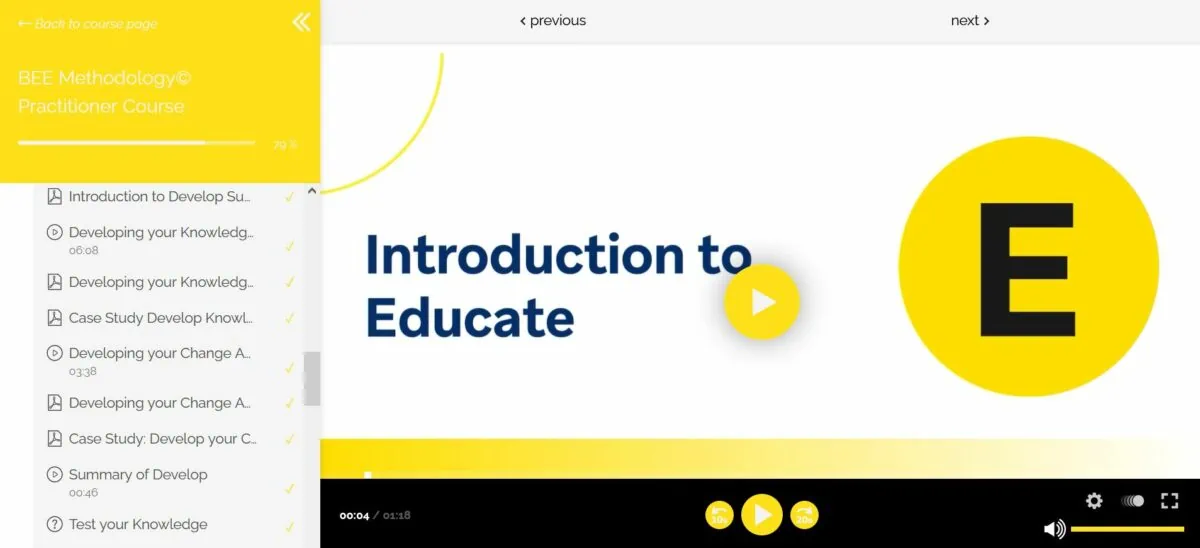
How long does the BEE Methodology course take?
The Practitioner course is 4 hours 30 minutes of video across 20 modules. The videos are short enough for you to watch a couple at a time.
What you need to do to pass the course
You can take the assessments without studying the course material, so if you’ve just read the book, or are a
However, I recommend working through the video content, skimming the PDFs so you focus on reading the ones that are the most relevant to learning (e.g. not the checklists and templates you need to implement).
Then find a quiet space to take the assessments. There is a limit on how many times you can try to pass the assessments, so only attempt they when you feel comfortable that you’re going to pass. They aren’t impossible, and it’s multiple choice format for the most part, so if you’ve worked through the course you will be able to pass them.
When you have completed all the assessments you unlock the ability to download your completion certificate.
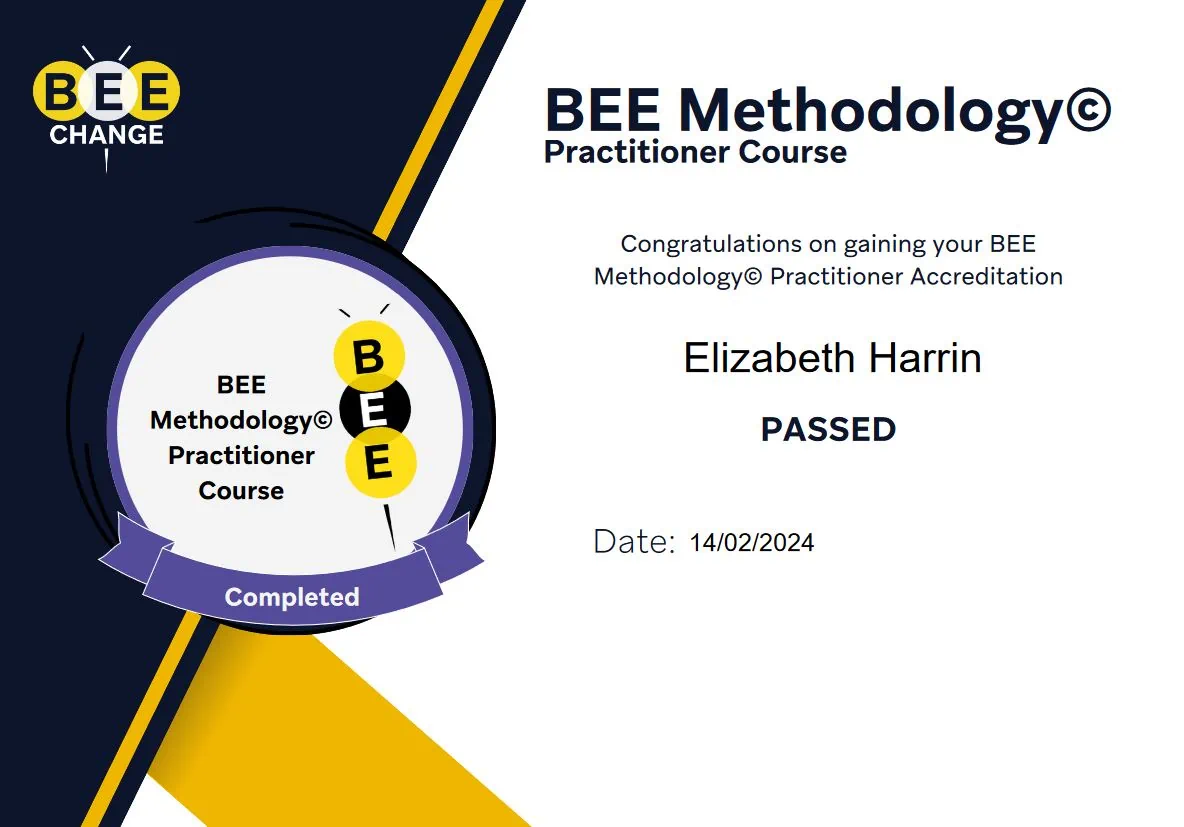
What I liked about the course
The training is well-structured and you feel like each section naturally builds on what you have learned in early videos.
I liked the fact that the course did not assume any prior knowledge of
I watched the videos on 1.25x speed and saved all the downloads. You get a mixture of very good, engaging videos with animations (not just a talking head), trainer-led videos, plus checklists, study notes, summaries and templates to download.
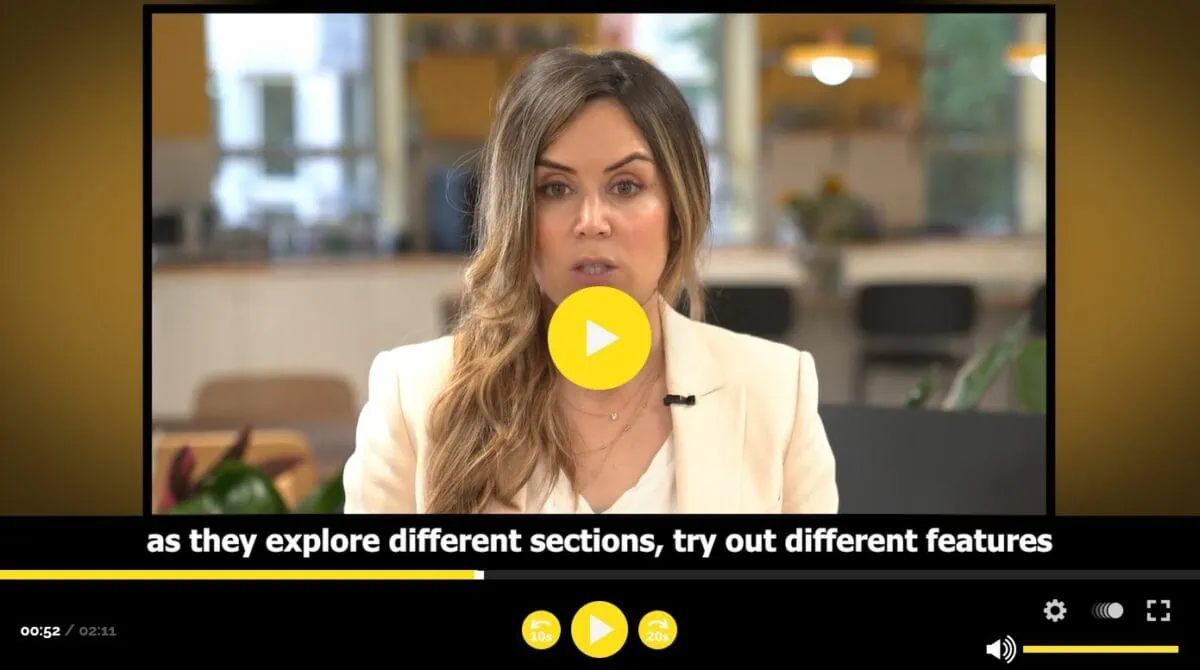
I loved the fact I could download the materials to use. The whole training is very practical, and very much geared towards someone who has hardly any time to get this right.
You can download the templates, implement the activities, do the tasks with your team and you’ll find the
There is also a comprehensive case study, so if at any point you can’t work out what any particular
What I didn’t like about the course
The course platform is OK. Each of the three main modules of the course (Build, Excite, Equip) is broken down into a further three topics but all the modules are at the same ‘level’ in the course platform. I think having sub-modules would have made the navigation easier.
However, overall the course platform is very slick and easy to use.
I had no issues with the content. I have read Nicola’s book so I kind of knew what to expect there.
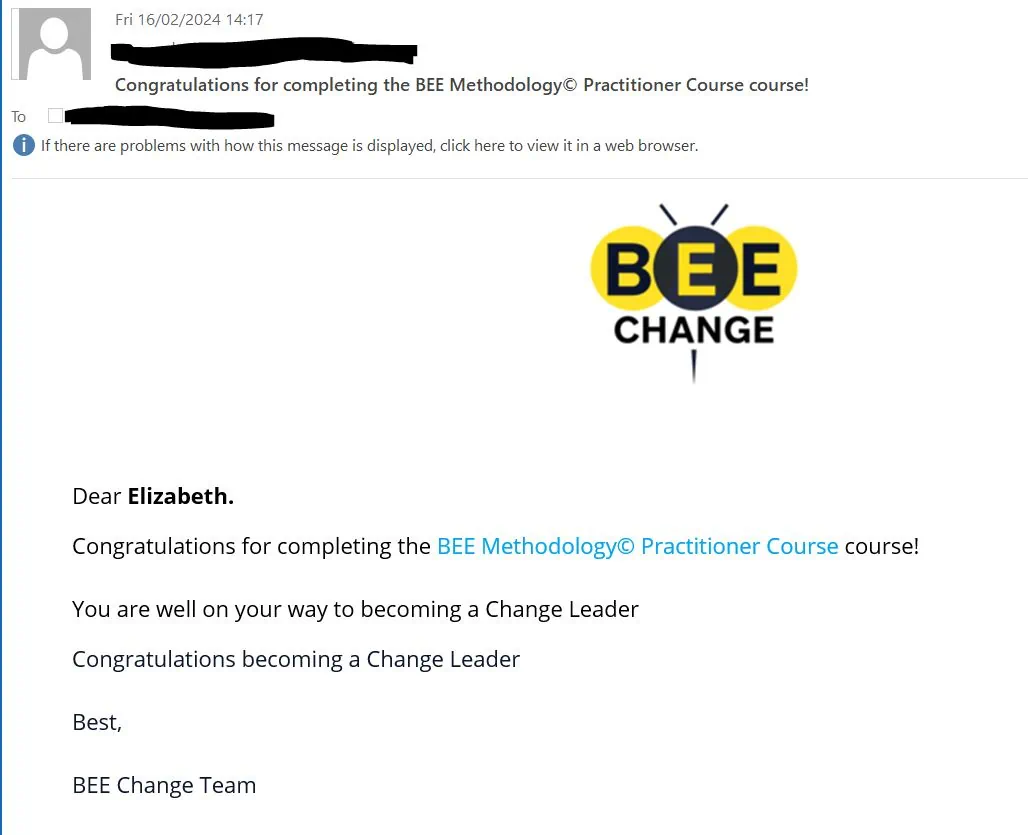
Tips for completing the course
If you are taking the Practitioner BEE Methodology course, then let me share some tips for making the learning process easy.
Read the PDFs
Read the handouts, checklists and other PDF materials as these provide additional materials to what you watch in the video. I started out watching the videos and assuming the PDFs were a summary of what I had just learned for people who prefer to learn by reading.
That’s not the case, as I found out when doing one of the quizzes and realizing I hadn’t covered the material!
Tip: The material is all there but some of it is in written form. Read the PDFs and handouts as well as watching the videos!
Complete the quizzes
You need to complete the quizzes/assessments to get your certificate. You have to complete the Build, Excite and Equip overall assessments. Sometimes the questions are repeated from the sub-section assessments but sometimes they look like they are but they are not. Don’t get caught out by a different graph or data set to interpret!
At the end of each main assessment you’ll get a code. You need all three codes to apply for the overall Practitioner certificate. This sounds complicated but it really isn’t. Just screen shot your codes and keep them safe until the end.
Tip: Fill in the blank questions need you to type your answer into the space. They are not drag-and-drop.
Block out the time
The course overall is less than 5 hours which means you could technically complete it in a day. However, there is a lot of material to go through and plenty of concepts to get your head around like change agents, ABC scorecards, WIIFM, project brand identity and more.
I found I couldn’t do the training in one sitting so I spent several days going through smaller chunks of it. It still took me less than a week.
Tip: Spread out your learning and block out the time to study, preferably while you are applying the knowledge to a real project too.
Integrate the method into your project
You’ll find you understand the tools and techniques better if you integrate them into your project plans as you go. Pay particular attention to the Build/Project section as that covers how to overlay BEE into your project lifecycle.
Tip: Put as many of the concepts, templates and tools into practice as you can and you’ll find the method starts to come naturally.
Recommendation: Should you take the BEE Practitioner course?
I loved the content of this course and I felt I could definitely use it in my day-to-day project management.
I’ll be honest: the other thing I love about it is the price! At £349 (which is about $450 USD) it’s a lot more manageable for professional development discussions with your boss. That feels like a reasonable price to pay, and it is definitely worth it. You’ll get that much value from it.
If you are leading projects that impact other people, you need to have
Learn the Build, Excite, Equip methodology for change management on projects. A cost-effective and comprehensive self-paced training.
